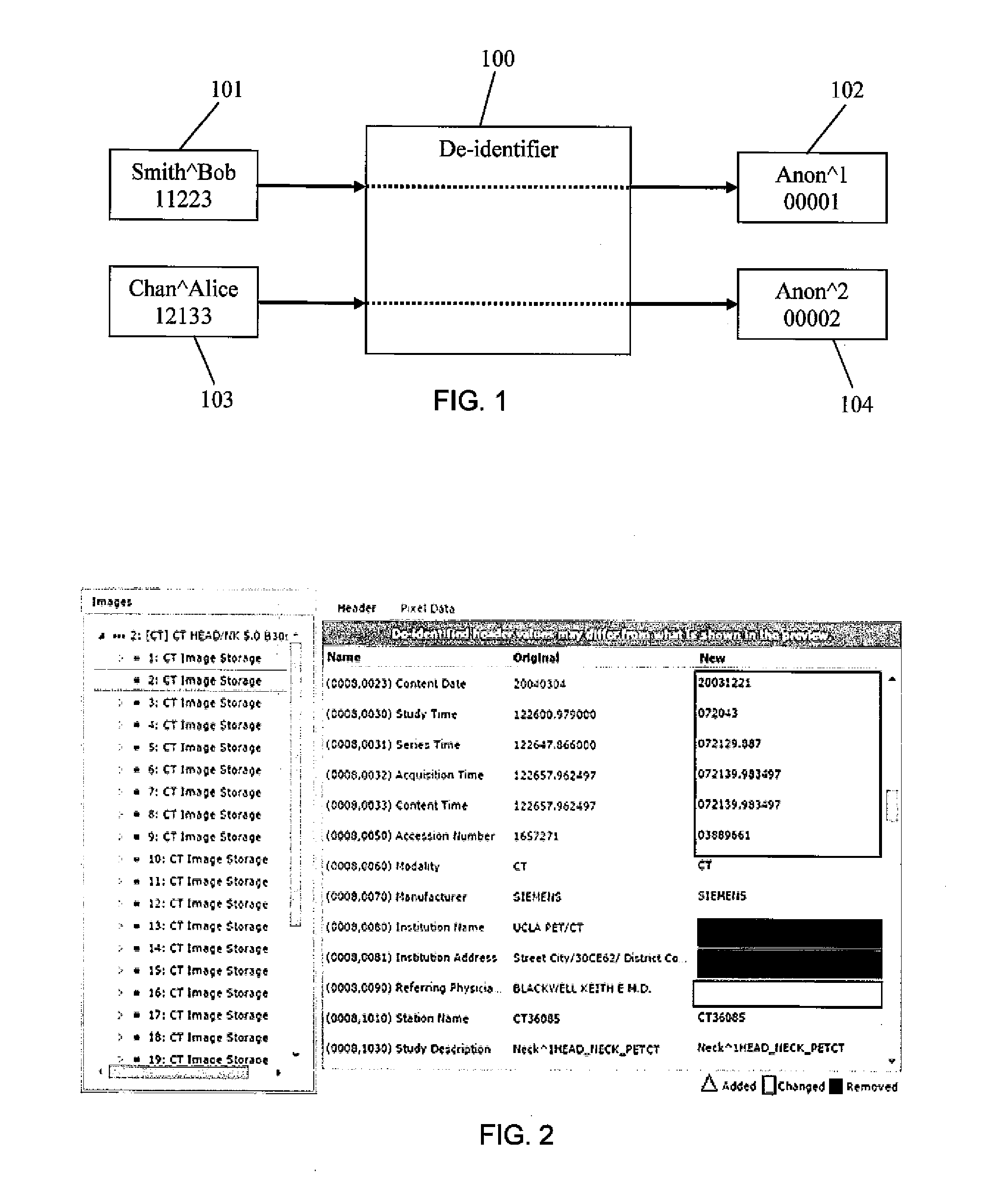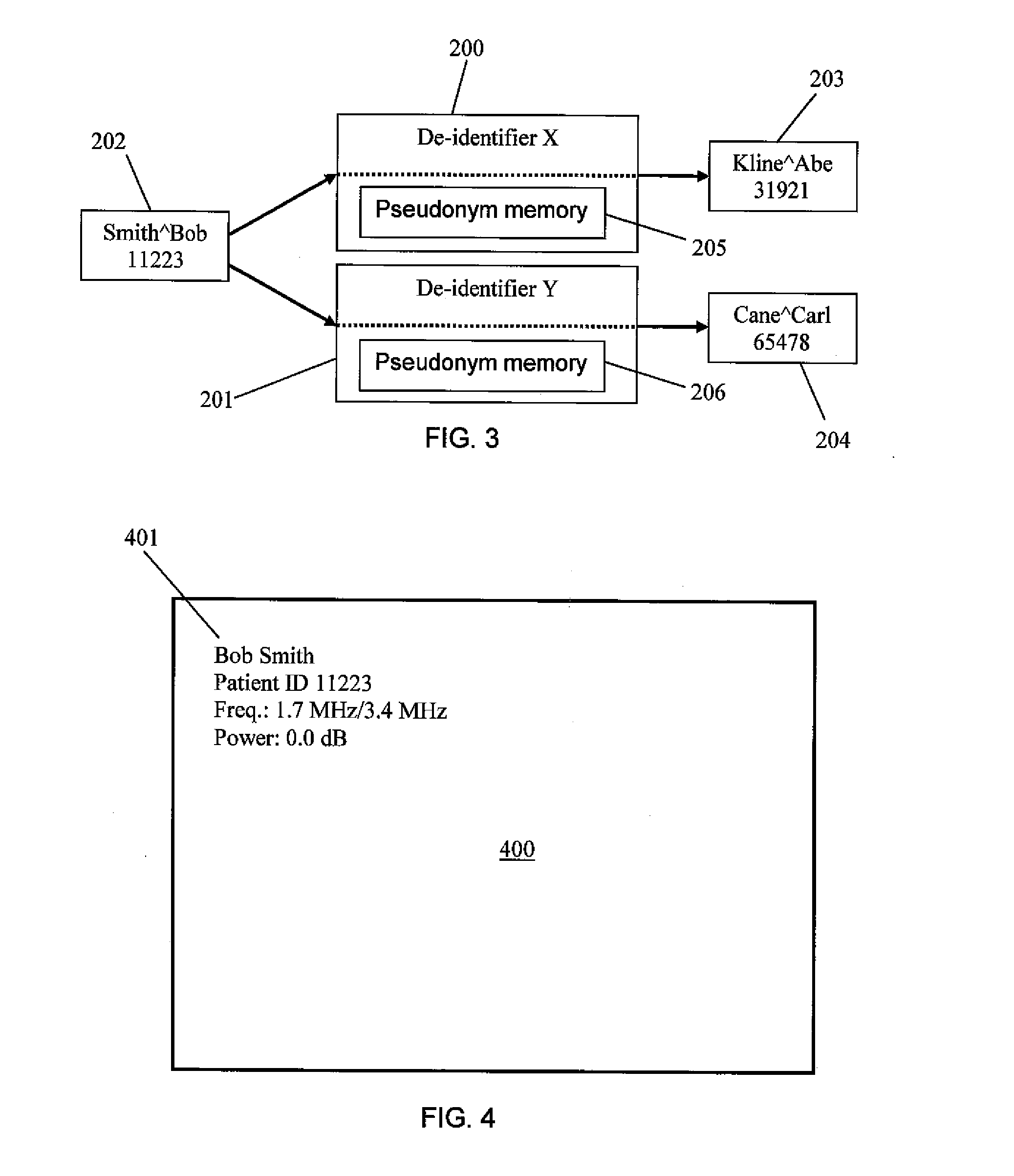Dicom de-identification system and method
a de-identification system and computer technology, applied in the field of computer systems, can solve the problems of not being able to meet the complex needs of real-world de-identification use cases, unable to provide a number, and unable to achieve advanced customization in those scenarios
- Summary
- Abstract
- Description
- Claims
- Application Information
AI Technical Summary
Benefits of technology
Problems solved by technology
Method used
Image
Examples
Embodiment Construction
[0034]The Programmable Memorizing DICOM De-identification (PMDD) system is a de-identification module that may be a stand-alone application or may be included as a component of an integrated software application. It provides de-identification capabilities that go beyond those offered by existing solutions.
[0035]In the context of PMDD, a“de-identifier”100 is a logical entity that can be conceptualized as a “machine” that accepts DICOM image files 101, 103 (which may constitute a DICOM study) as input and produces de-identified image files 102, 104 as output as depicted schematically in FIG. 1. In the example depicted in FIG. 1, one or more image files for the patient with the name Bob Smith (“SmitĥBob”) and patient ID 11223 are edited by the de-identifier 100 to change all instances of “SmitĥBob” in the image headers to “Anon̂2” and to change all instances of patient ID “11223” in the image headers to “00001”.
[0036]A user of the PMDD can define any number of de-identifiers within t...
PUM
 Login to View More
Login to View More Abstract
Description
Claims
Application Information
 Login to View More
Login to View More - R&D
- Intellectual Property
- Life Sciences
- Materials
- Tech Scout
- Unparalleled Data Quality
- Higher Quality Content
- 60% Fewer Hallucinations
Browse by: Latest US Patents, China's latest patents, Technical Efficacy Thesaurus, Application Domain, Technology Topic, Popular Technical Reports.
© 2025 PatSnap. All rights reserved.Legal|Privacy policy|Modern Slavery Act Transparency Statement|Sitemap|About US| Contact US: help@patsnap.com



